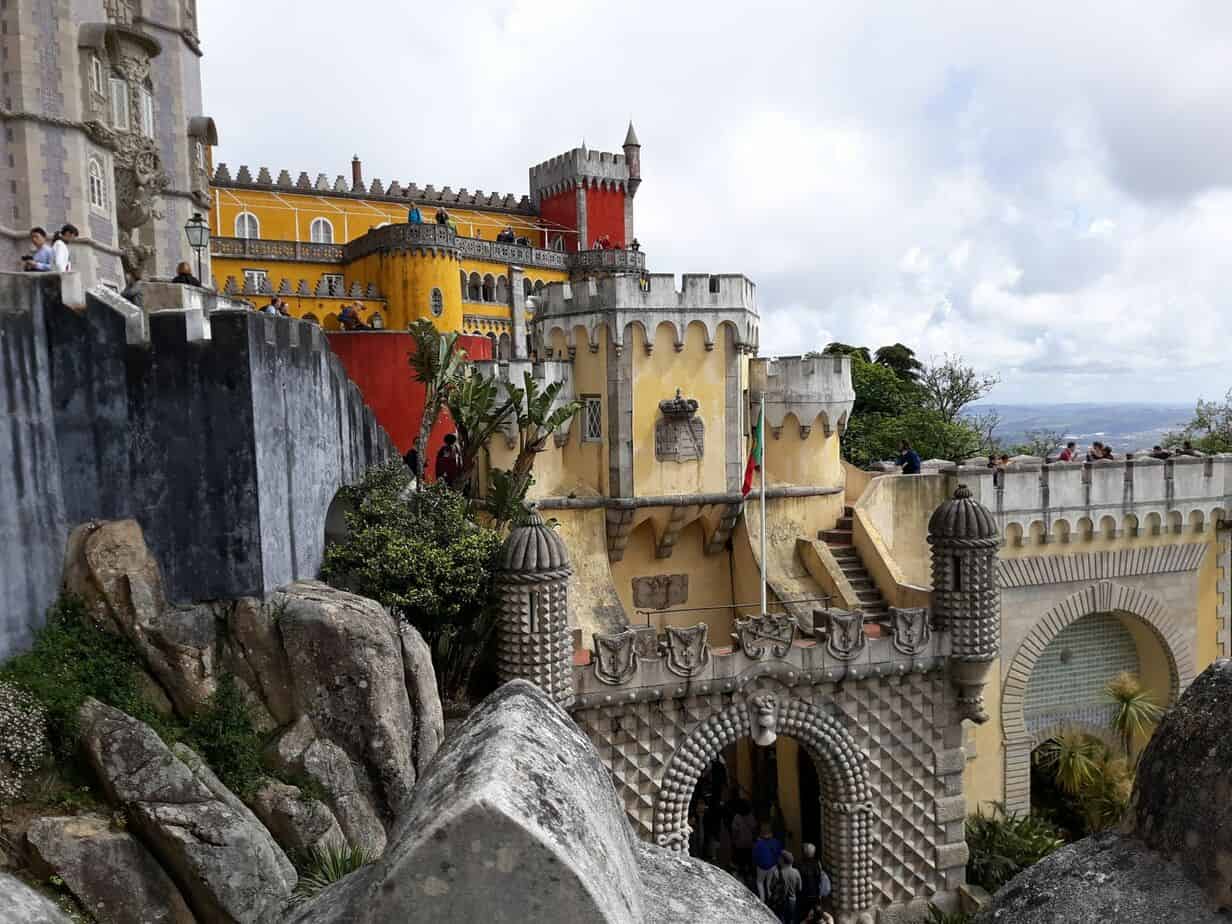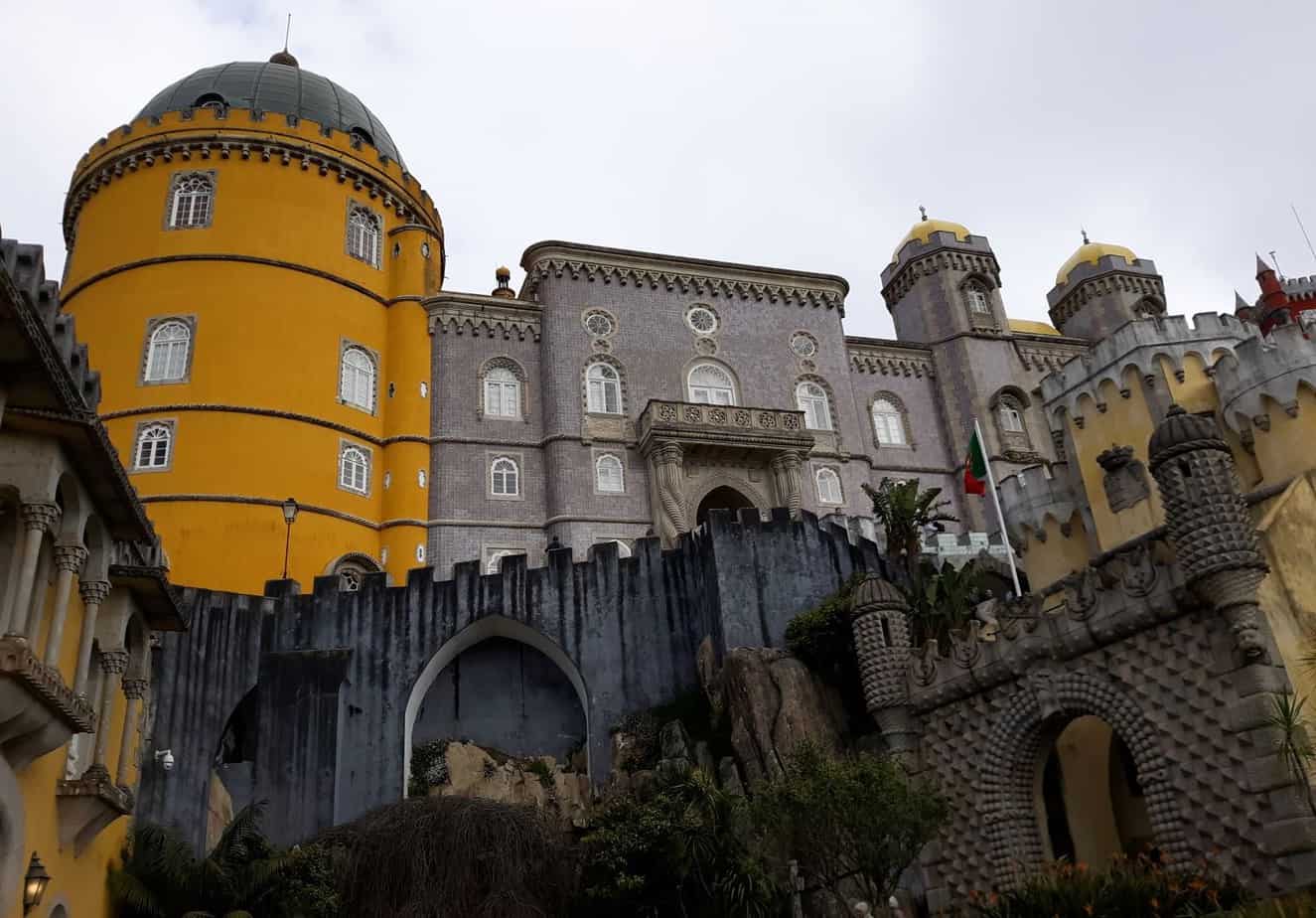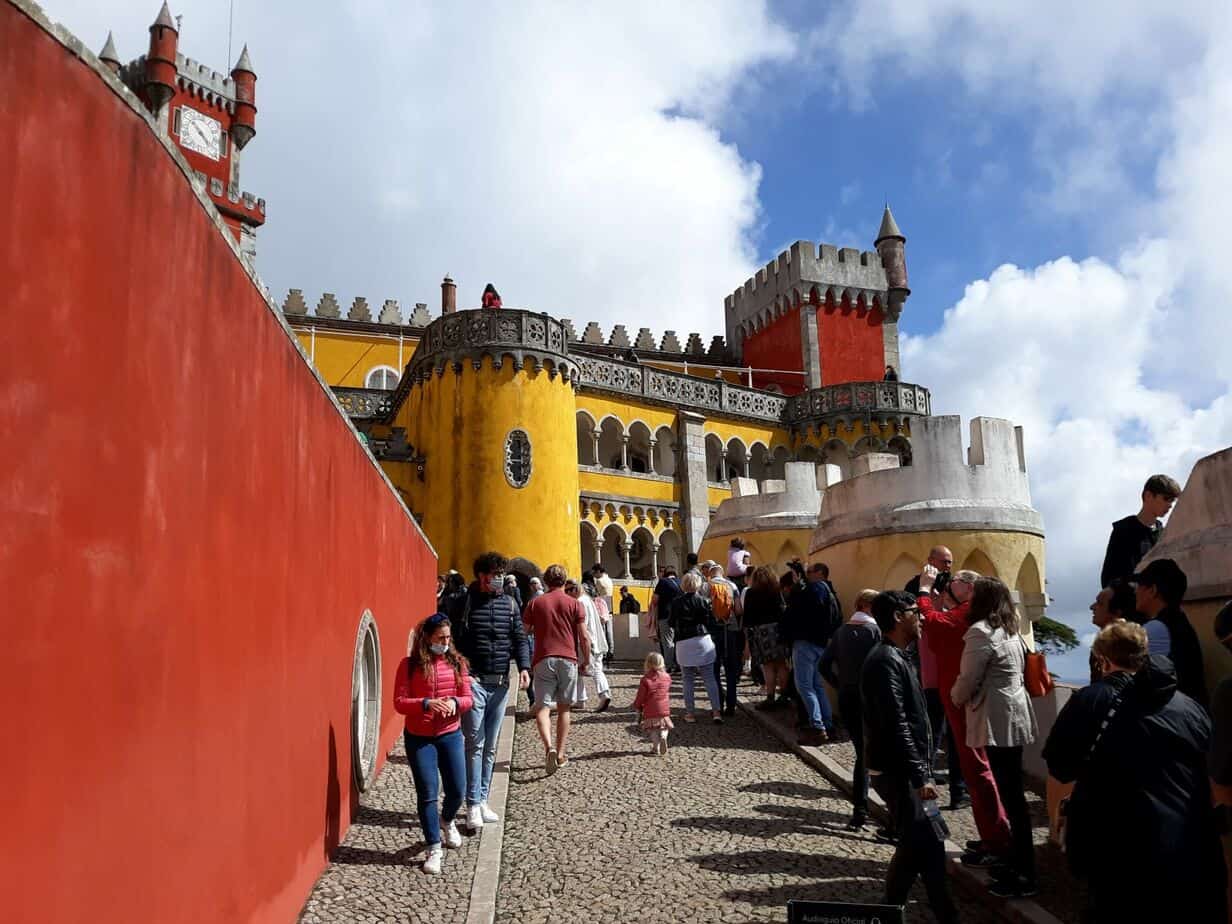One of Portugal’s top attractions is a fairy tale castle on a hilltop in Sintra outside Lisbon.
Pena Palace origin story
The Pena Palace was originally just a Medieval chapel on a steep hill in Sintra. The chapel was expanded to a monastery in the 16th century. The earthquake of 1755 that leveled Lisbon also destroyed the monastery, although the chapel remained standing.
The site stood in ruin for almost 100 years until King Consort Ferdinand acquired it and the surrounding land (including the Castelo dos Mouros) in 1838. The royal palace was completed in 1854. Amélie, the last queen of Portugal, spent the night in the Pena Palace before leaving in exile, effectively ending royal rule and beginning the Portuguese First Republic.
Visiting the Pena Palace
During the buy season, the ticket lines can stretch on endlessly, eating into your valuable time. Instead, buy your ticket in advance online and save your sanity as well as some money. But, be aware that the tickets are time stamped. You’ll need to plan ahead and give yourself enough time to get to the palace and wait in the line to get inside because if you arrive late, you might be turned away.
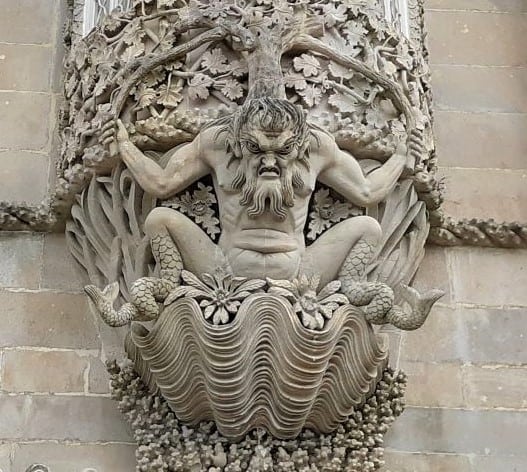
Don’t sleep on the walk from the entrance to the Pena Palace. Lush gardens filled with native and exotic plants line the route. But, if you don’t want to walk uphill to the palace, there is a bus available that can zip you there in a couple minutes. Walking back down after visiting the palace will be easier and you’ll still get the full effect of the greenery.
Inside the palace are several state rooms filled with artifacts and some artwork, many of them left by the royal family when they fled the country in 1910. For more information download the audio guide to the Pena Palace.
But, the real attraction is viewing the palace from outside. The bright colors and garish decoration looks like something out of a Disney movie, a structure designed less for defense and more as an ostentatious display of wealth.

If you’re in a time crunch, I’d suggest skipping the inside of the palace and enjoying the views from the outside. But, don’t miss strolling the gardens.
Getting There
There’s a train that goes from Lisbon to Sintra. Depending on where you depart from, the trip takes 45 minutes or so.
From the train station in Sintra there are several ways to get to the Pena Palace. You can take an Uber or Taxi.
There will also be tour operators and tuk-tuk drivers outside the station. No need to look for them, they’ll find you, trust me.
There’s also the local 434 bus that makes a loop from the station to the historic center and up the hill to the Castelo dos Mouros and the Pena Palace.
You might be tempted to hike up the hill to the Pena Palace. I’d advise against it. It is a long, steep climb that takes quite a while. This will severely cut into the amount of time you have in Sintra that would be better spent exploring the wonders of the city.
Plus, you’ll want to save your legs for the Castelo dos Mouros, the nearby ruins of the Moorish Castle. There, you’ll hike vertigo-inducing stone staircases and enjoy magnificent views of the Sintra valley and the Pena Palace.
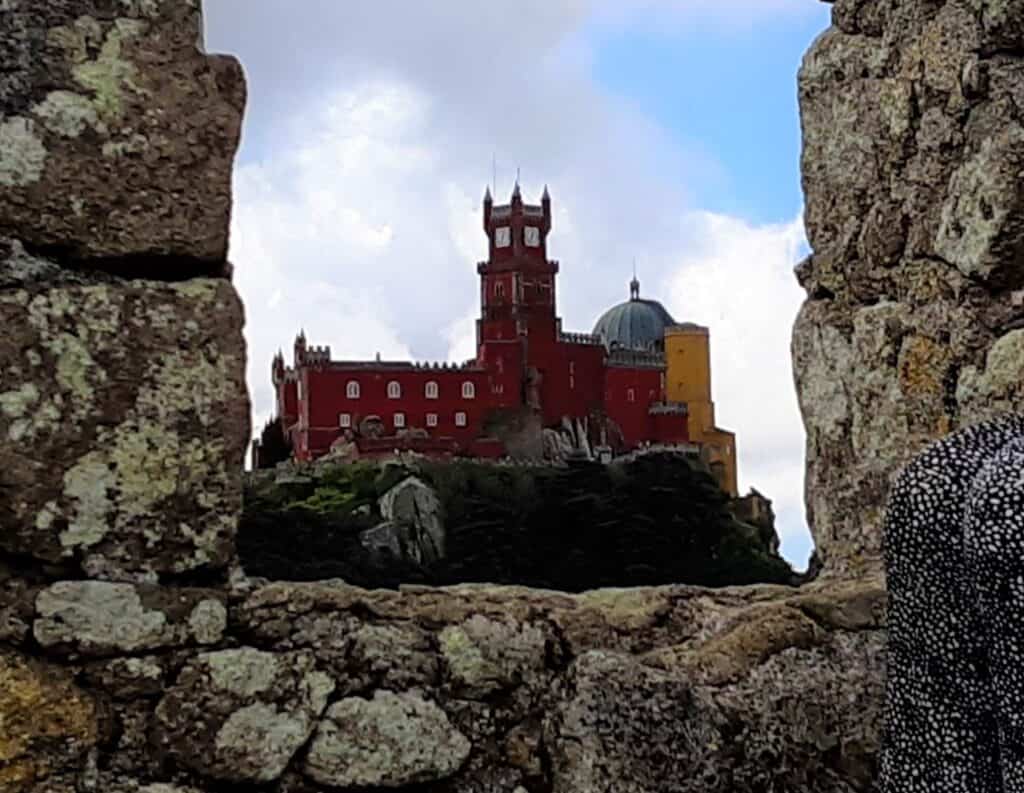
About the Author

Brent Petersen is the Editor-in-Chief of Destination Eat Drink. He currently resides in Setubal, Portugal. Brent has written the novel “Truffle Hunt” (Eckhartz Press) and the short story collection “That Bird.” He’s also written dozens of foodie travel guides to cities around the world on Destination Eat Drink, including in-depth eating and drinking guides to Lisbon, Porto, Sintra, Monsaraz, and Evora in Portugal. Brent’s podcast, also called Destination Eat Drink, is available on all podcast platforms.

